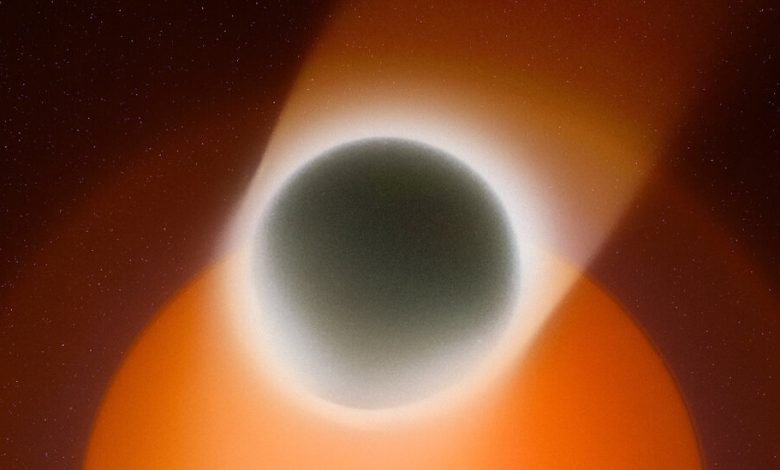My Faith Forbade Eclipse Gazing. Now It Inspires My Art.

As a child growing up in the Hare Krishna community in the United States, I was forbidden to be outside during a solar eclipse.
In our version of Vedic astronomy, eclipses are believed to be a deeply inauspicious time when the demon Rahu’s decapitated head chases the sun and the moon. In this chase, Rahu’s head obscures or swallows the sun. A visceral fear would sweep our community as an eclipse approached. We crowded into the inner sanctum of the temple to recite prayers, hoping to counteract the forces of darkness that were consuming our universe. As totality enveloped us, a profound sense of unity between our community and Lord Krishna crescendoed. As Rahu receded, the sun gradually dispelled the darkness, bringing collective relief as the forces of goodness triumphed over chaos once more.

Credit…Photo Illustration by Balarama Heller for The New York Times
Many ideas in Vedic cosmology (which seeks explanations for both human and nonhuman affairs throughout the universe) depict the physical universe as profoundly animate and vibrant. Some explanations for the mechanics of the observable world mirror modern understandings of concepts like the atom, the cyclic nature of time at scale and quantum mechanics’ “many worlds” theory. But it is still an ancient set of beliefs where planets possess their own personalities, akin to living deities or demons. I am no longer religious, and do not believe in god nor superstition. But growing up, I regarded existence as a grand stage where conflicting energies of chaos and order perpetually and cyclically clash, each vying for supremacy before gradually reconciling and reaching a delicate equilibrium where they coexist in a harmonious, unified balance.
Observing the sky and fully embracing the belief that an eclipse occurred owing to a demon’s attempt to devour the moon or sun shaped my early worldview. But over the years, my exposure to scientific readings — especially “The Demon-Haunted World” by Carl Sagan and Ann Druyan, which sought to explain the scientific method to the general public — gradually transformed those views. I shifted away from a mythic-religious perspective and embraced modern science, and learned that a solar eclipse is the moon passing between the earth and the sun, obscuring our view of the sun.





